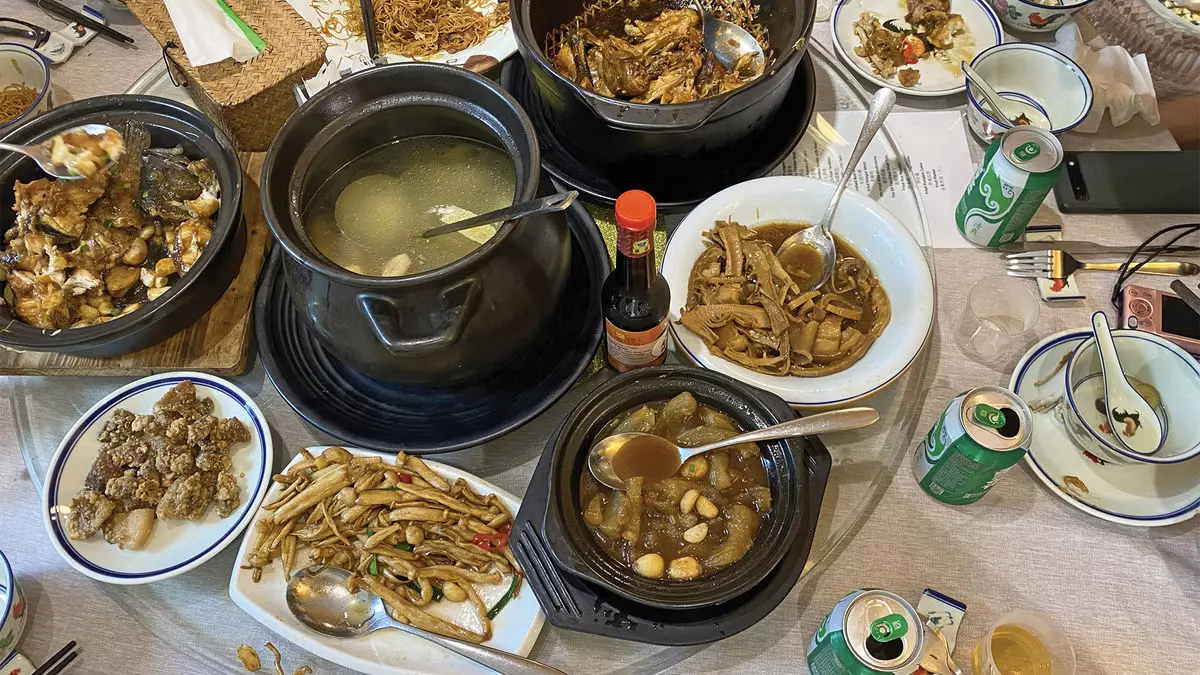For centuries, tea has been a staple in many cultures, particularly in China, where it has woven itself into the very fabric of society. My own relationship with tea, particularly green tea, has been a quiet morning routine for the past two decades. However, it wasn’t until a recent cruise with Viking that I began to truly understand the journey my beloved beverage takes—transforming from plant to cup. This exploration illuminated not only the physical journey but also the intricate cultural landscape surrounding tea in China.
My journey began aboard the Viking Yi Dun during its inaugural coastal cruise through China, specifically tailored for English-speaking travelers. This voyage from Shanghai to Shenzhen in September introduced passengers to the rich cultural tapestry of China. Among the highlights was an engaging onboard tea ceremony, where a captivating performer demonstrated the art of tea preparation. Accompanied by the soothing melodies of the guqin, it felt less like a simple beverage ritual and more like an ancient performance art. Each step—the warming of the cups, the strategic brewing and pouring of tea—was executed with meticulous care, offering us a glimpse into the reverence with which the Chinese regard their tea.
This short yet poignant experience piqued my curiosity, leading me to venture deeper into the heart of traditional tea culture during an excursion in Xiamen, Fujian Province, the home of Tieguanyin tea. Known for its distinct oolong variety, this region boasts an age-old heritage of tea cultivation that reflects both its geography and its climatic conditions.
As our group ascended into the verdant mountains of Fujian, the sight of neatly arranged tea terraces unfurled like a lush green canvas. The orderly rows of tea plants mirrored the familiar outlines of vineyards I had seen in Italy, invoking a sense of agricultural harmony that resonated deeply within me. Our guide, armed with a wealth of knowledge, educated us about Tieguanyin’s unique characteristics: its delicate dance between the realms of green and black teas, influenced greatly by its oxidation level.
Upon arrival in An’xi County, the aroma of freshly plucked tea leaves enveloped me, awakening emotions and memories associated with my own tea-drinking experiences. The local cuisine further enhanced our cultural immersion. We were treated to an exquisite family-style lunch, featuring dishes where tea played a starring role. The tea-scented longdan fish paired beautifully with braised meats and vegetables, reinforcing the idea that tea is more than just a beverage; it’s a culinary experience that permeates everyday life in this region.
Suitably outfitted with bamboo hats and tea baskets, our group prepared for the hands-on experience of harvesting Tieguanyin leaves. Guided by local experts, we learned how to identify the ideal leaves to pick—two larger leaves flanking a tender baby shoot. This process wasn’t just harvesting; it was an intimate dialogue between person and plant, marked by the sensory delight of the earthiness of the leaves and the atmosphere of communal effort.
However, not all moments unfolded as planned; the rainy weather and relentless mosquitoes reminded us of nature’s unpredictable temperament. Taking refuge under a gazebo, we continued to delve into the tea’s lore, enabling a deeper understanding of the work that goes into producing each delicate cup.
Following the harvest, we observed the processing of the leaves—a series of intricate steps including drying, frying, and rolling. Participating in the drying process reinforced the importance of traditional methods in preserving the essence of Tieguanyin tea. This hands-on learning not only deepened my appreciation for the tea but also connected me to the generations that had dedicated their lives to the craft.
Our adventure culminated in a traditional tea ceremony within a cozy, intimate tearoom. Gathering around a low table, we partook in the same ritual we had witnessed on the ship. Sipping from small cups, we examined the delicate flavors of both caffeinated and decaffeinated teas, establishing a direct line of connection to the artisans who nurtured and processed the tea we enjoyed.
As I purchased some tea leaves to take back home, I felt more than just a traveler; I felt like a custodian of a treasured tradition. This journey through the world of Tieguanyin not only enhanced my appreciation for tea but also underscored its significance as a cultural artifact and a remarkable labor of love. In a world often driven by haste and disconnect, it reminded me that the journey from plant to cup is a story worth savoring—one sip at a time.


Leave a Reply